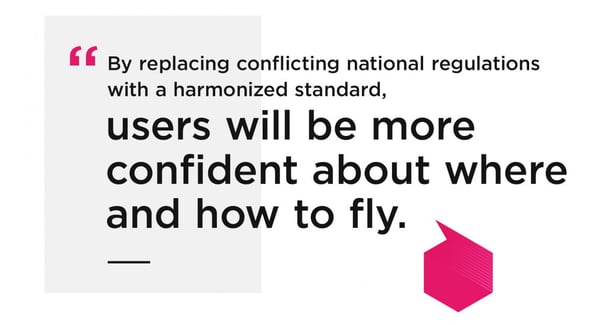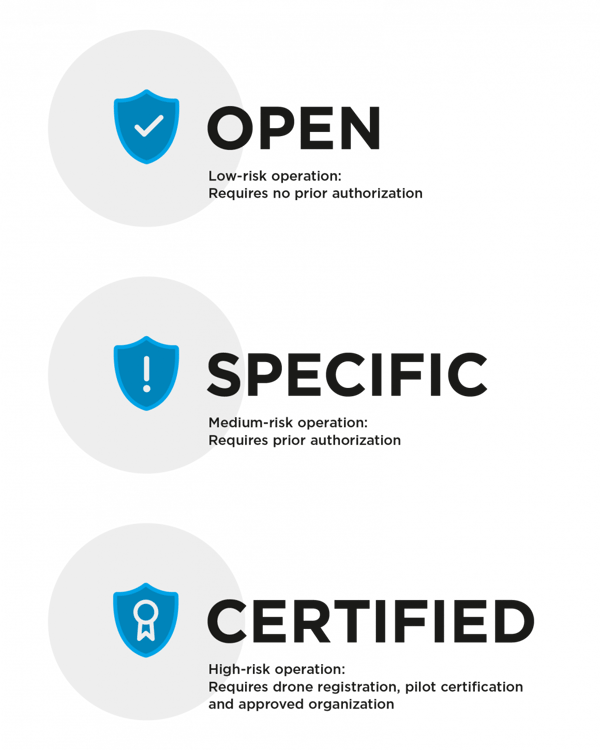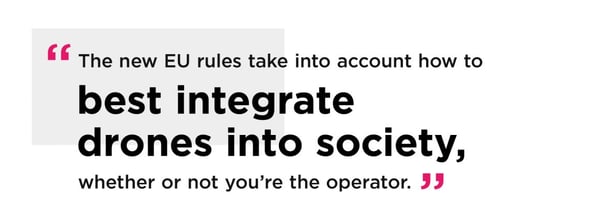After years of negotiation, feedback, and revision, the European Commission released a new regulatory framework for the use of drones throughout the entire EU, set to begin in mid-2020. If you’re a drone enthusiast living in an EU member nation, what does this mean for you?
Well, with consistent laws like these, it’ll actually be easier to fly safely while following the rules, which we expect will help expand drone use. But since there are a lot of details to go through and the implementation of these laws varies by country, we at ViewPoints have provided the main points so you can fly confidently this year and beyond.
Why Were These New Rules Made?
The drone industry has been growing fast. More people are using drones, and drones are impacting more people.

This why the leading principle for the new framework is based on safety risk to everyone, paying particular attention to flight over or close to people and airports, drone weight, noise pollution, and privacy rights.
Furthermore, EU-wide rules were necessary to get all member states on the same page. We now have a harmonized set of rules that will govern a large part of the world, making acceptable drone use much more clearly defined and easier to understand.
How Do These New Rules Affect Me?
To answer this question, we’ve come up with what we think will be common scenarios. If you have any more, please let us know!
“I have a Mavic Pro for private use.”
You’ll need to register as a drone operator, as the drone is heavier than 250 grams.
“I’m using a Phantom 4 for safety inspection.”
“I’m using a Phantom 4 to take photos on a road trip.”
Regardless of how you use the drone, EU rules focus on safety risks. You will need to register yourself and your drone.
“One EU rule requires that my drone includes data encryption and an anti-collision beacon.”
If you are using a DJI drone, you might be in luck! There are features in existing products that are likely to align with the new rules. For example, the Mavic 2 Enterprise and Matrice 200 Series V2 already have data encryption and anti-collision beacons on their platform.
“I regularly use a company drone for aerial mapping.”
While you do need to register as a drone operator for this kind of operation, the EU framework is also trying to make the process easier. In your case, instead of applying for authorization before every flight, you can qualify for Standard Scenarios (STS) use. STS gives blanket authorization for specific flights that are commonly done and generally safe, such as aerial mapping and emergency use.
“I just bought the Mavic Mini.”
Drone operator registration requirements apply for drones heavier than 250g or with sensors such as cameras. While the Mavic Mini weighs just 249g, it has a camera, so you will need to register it in your country of residence.
“My country’s laws set a strict 100m altitude limit, while the EU states 120m.”
For any regulation where there is a conflict between the local mandate and the new EU framework, the latter will prevail. So, if your country currently has a lower altitude limit, you will be able to enjoy flying up to 120m once the new EU mandate takes effect!
“I use a drone for work. An EU rule competes with my country’s current law and will negatively impact my ability to fly.”
The roll-out of these laws also allows for transitioning to these adjustments. From now until July 2020, any current national laws will still be in place without alteration, and if the EU regulations conflict with national ones, users and organizations can apply for exemptions and permits. From July 2020 to July 2022, the exemptions given to the July 2020 deadline will be honored. From July 2022, only the EU regulations will be followed, replacing any national ones.
Specifics: Drone Use and Weight Categories
First of all, drone use classification has been categorized into three distinct categories.

Drones themselves are categorized, also in three.

How will these rules affect drone use in the European Union?
Because specific laws, like how drone Remote ID will be implemented, are still under negotiation, it’s not easy to say what exactly these new regulations will look like in two years. That being said, the framework, in our opinion, actually will help the drone industry and those who use it for personal or professional use.

Commercial users will also see positive impacts, we believe. With these harmonized rules, regions that lacked regulatory foundations will now have safe, responsible laws given to them. We will see drone-based services that are becoming integral in some societies already, whether for public safety, infrastructure inspection, or even search and rescue.
Drones in the European Union: A Stronger Future
So, that’s the new EU drone regulations in a nutshell. Pretty easy, right? Ok, easy-ish.
We at DJI put a lot of effort into advocating for the new EU drone regulations to spread increased safety and open more possibilities for innovative drone use across member nations. We’re glad that this new framework does just that, and we look forward to the ways that individuals and organizations can take advantage of them.

